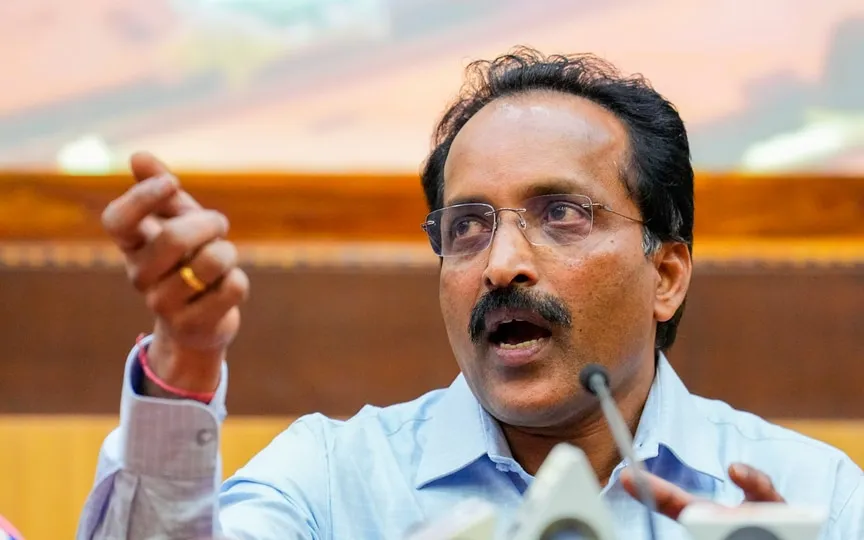ISRO chief discusses challenges and goals for Chandrayaan 4 lunar mission
During a speech at the National Space Science Symposium, ISRO Chief S Somanath discussed the significant obstacles and advancements related to India’s upcoming lunar exploration mission, Chandrayaan 4. Although the mission to collect lunar samples is awaiting approval, Somanath highlighted the intricate challenges that make this project especially difficult.
Expressing the ongoing debate in the scientific community, Somanath noted, “Many considerations arise, such as whether to repeat previous missions, collect samples, or pioneer a different mission. This question is still under consideration.”
Somanath outlined the key challenges that differentiate the Chandrayaan 4 mission from its predecessors:
1. Versatile launch requirements: Unlike Chandrayaan 3’s single-stage launch, Chandrayaan 4 requires multiple launchers to facilitate reentry and return to Earth for sample delivery.
2. Critical Docking Capability: The mission requires a docking capability in either Earth or Lunar orbit, as failure in this regard could lead to mission failure.
3. Robotic drilling and sample handling: Somanath emphasized the need for robots for drilling, selecting samples and safely placing them in compartments. This is to illustrate the transfer of samples between modules.
4. Scientific advances: Highlighting the progress of the mission, Somanath emphasized the transition beyond remote sensing and in situ observations to the ground-breaking phase of bringing lunar samples back to Earth for comprehensive laboratory analysis.
The ISRO chief provided an update on the status of the mission, indicating that scientists are refining India’s concept of collecting various lunar samples and transporting them back to Earth for further study. The complex architecture, knowledge and skills of both rocket and satellite experts are carefully designed. Somanath emphasized the importance of joint efforts to ensure the success of the Chandrayaan 4 mission, with the target of completion by 2027.
Different from its predecessor, Chandrayaan 4 mission included launch vehicle options like PSLV and LVM3 and introduced five spacecraft modules namely Re-entry Module (RM), Transfer Module (TM), Ascender Module (AM), Descender Module (DM) and Propulsion Module (PM). This is different from the Chandrayaan-3 mission, which included a Lander Module, a Rover and a Propulsion Module.




